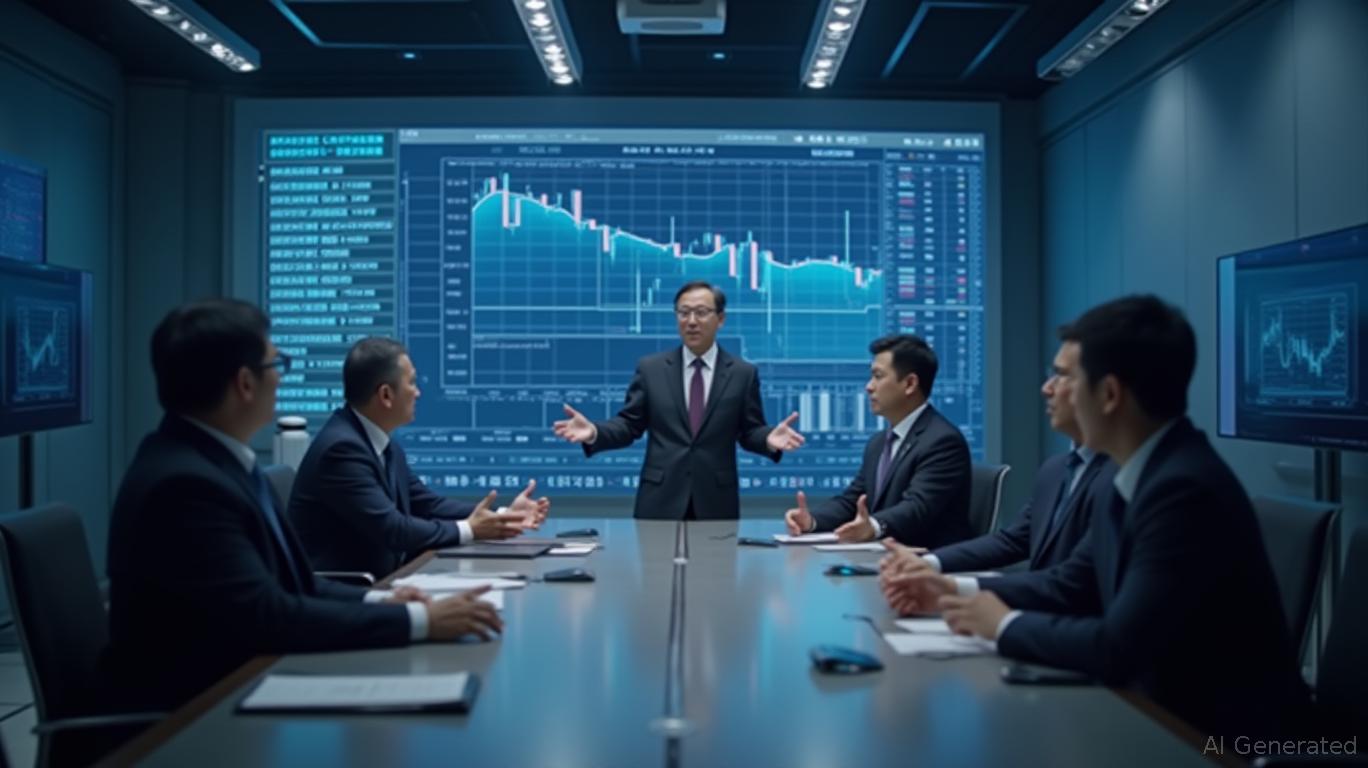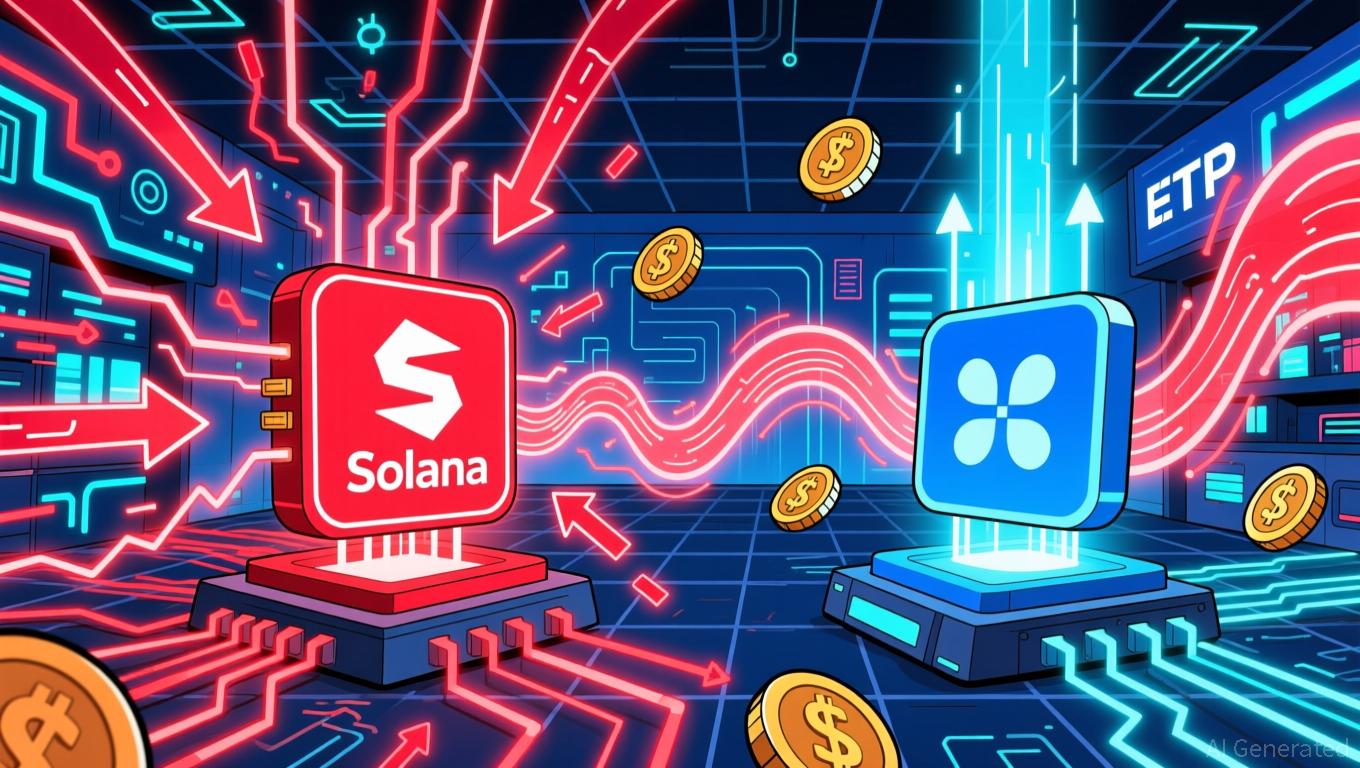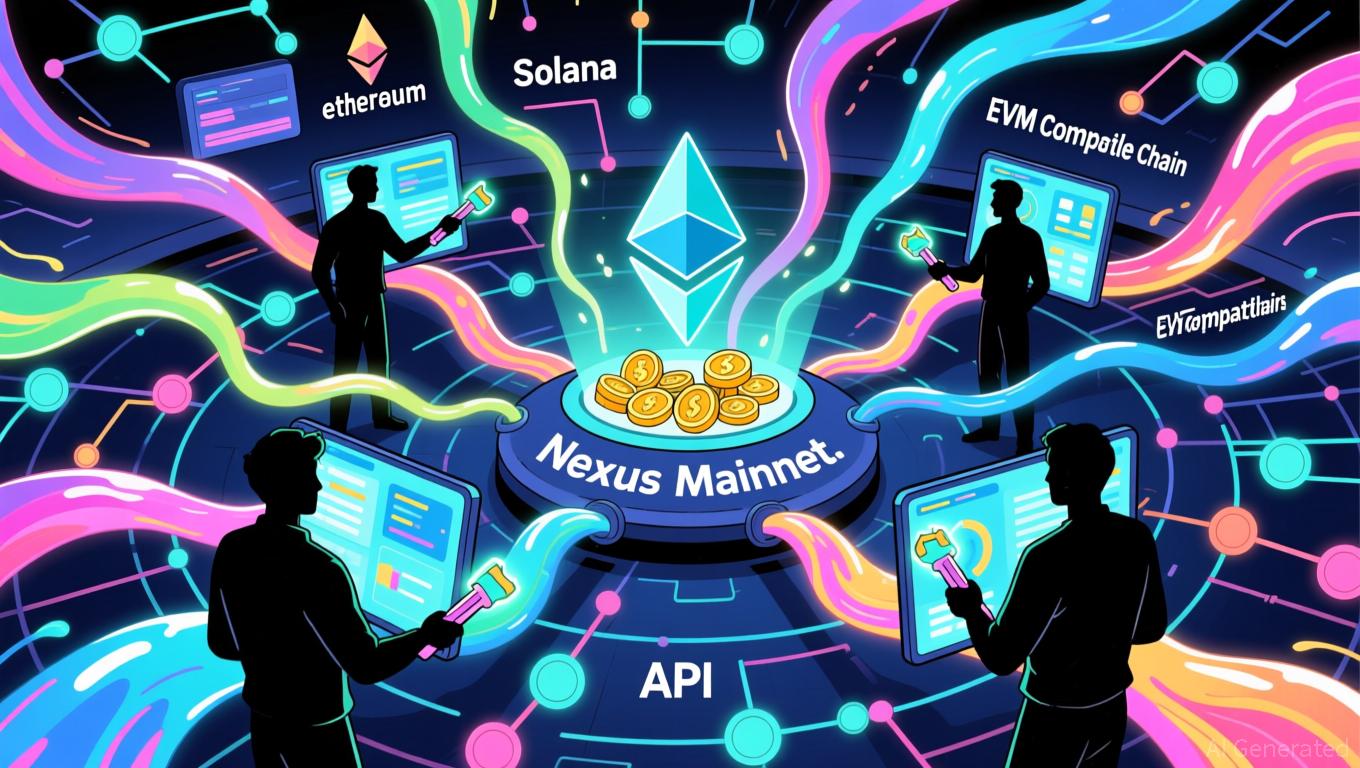South Korea's KRW1 Stablecoin Strives to Strengthen Its Position as a Global Leader in Digital Finance
- South Korea's BDACS launched KRW1, a won-backed stablecoin on Circle's Arc blockchain, marking its first cross-border digital finance gateway. - The stablecoin, fully collateralized and audited by Woori Bank, leverages Arc's interoperability to expand beyond Avalanche, aligning with Korea's digital finance strategy. - Circle's Arc, now hosting 100+ institutions including BlackRock, positions KRW1 as part of a growing Asian trend in blockchain-based stablecoins. - Regulatory challenges persist as Korea dr
South Korea’s BDACS has

KRW1 is fully backed by the Korean won and undergoes audits by Woori Bank. The stablecoin is set to use Arc’s interoperability features to broaden its presence beyond its original launch on the
This collaboration highlights South Korea’s forward-thinking approach to digital asset development. The government is currently preparing new regulations for stablecoins to ensure compliance and encourage innovation. BDACS CEO Ryu Hongyeol emphasized the partnership’s importance for “bringing Korean innovation to the global arena,” noting that Arc’s capabilities—such as rapid transaction finality and privacy options—serve both institutional and individual users. BDACS also announced plans to
Circle’s Arc blockchain, which began its public testnet in October 2025, has drawn participation from over 100 international institutions, including BlackRock and Goldman Sachs. By joining this network, KRW1 stands alongside national stablecoins from Japan, Brazil, and the Philippines, reflecting a growing trend of Asian countries embracing blockchain-based financial solutions. The platform’s architecture, which includes stable U.S. dollar-denominated fees and easy compatibility with fiat-linked assets, makes it a strong contender for cross-border payments and asset tokenization.
Nonetheless, regulatory oversight remains a significant concern. The Bank of Korea (BOK) has encouraged banks to lead stablecoin issuance to reduce risks, but critics like Sangmin Seo from the Kaia DLT Foundation advocate for broader rules that would allow compliant non-bank entities to participate. BDACS has reiterated its dedication to transparency, ensuring that KRW1 tokens are continuously audited and securely managed.
The rollout of KRW1 on Arc will proceed in phases, with BDACS and
For Circle, this collaboration strengthens its foothold in Asia, where demand for stablecoins is rising. The Arc network, together with its
As KRW1 adoption grows, its impact will depend on its use in payments and international transfers. BDACS aims to establish South Korea as a leader in digital finance by merging strict local regulations with global blockchain technology, potentially transforming the regional landscape for fiat-backed digital currencies.
---
Disclaimer: The content of this article solely reflects the author's opinion and does not represent the platform in any capacity. This article is not intended to serve as a reference for making investment decisions.
You may also like
Ethereum News Update: Amundi’s Integrated Approach Connects Blockchain with Conventional Financial Regulations
- Amundi, Europe's largest asset manager, launched its first Ethereum-based tokenized money-market fund, enabling 24/7 settlements and transparent record-keeping via blockchain. - The hybrid model, developed with CACEIS, combines traditional fund operations with blockchain-based ownership, preserving regulatory compliance while expanding investor access. - Ethereum's dominance in stablecoin and RWA transfers ($105.94B in 30 days) underscores its role in accelerating tokenization, with Amundi positioning it

XRP News Today: XRP ETFs Drive Price Increases, While Solana ETFs Ease Selling Pressure
- XRP ETFs raised $587M in inflows since late November, outpacing Solana's $568M as investors favor altcoins with regulatory clarity and utility. - Bitwise XRP ETF's $107M debut and zero-fee strategy drove momentum, while Solana ETFs faced $156M weekly outflows due to network reliability concerns. - XRP's inflows acted as a "battering ram" pushing prices above $2.27, contrasting Solana's ETFs which merely dampened sell pressure without reversing its decline. - Analysts predict XRP could reach $3 by Decembe

The Federal Reserve's Change in Policy and Its Impact on Alternative Cryptocurrencies Such as Solana
- Fed's 2025 policy shifts, including rate cuts and stablecoin regulations, are reshaping altcoin markets by altering liquidity and risk appetite. - Solana's Alpenglow upgrade (150ms finality, 1M TPS) addresses scalability issues, aligning with Fed's AI-driven infrastructure focus despite network reliability concerns. - Institutional inflows into Solana ETFs ($100M AUM) contrast with retail caution (78% HODLers in red), highlighting divergent risk perceptions amid 30% price corrections. - Divergent ETF flo

Avail's Intent-Driven Nexus Addresses the Issue of Fragmented Liquidity Across Chains
- Avail launches Nexus Mainnet, a cross-chain solution unifying liquidity across Ethereum , Solana , and EVM networks. - The intent-solver model enables seamless asset transfers without technical complexities, streamlining user experiences. - Developers gain modular tools for multichain integration, reducing costs as cross-chain liquidity demand grows. - Nexus abstracts execution layers, offering unified balances and execution while addressing fragmentation challenges. - With $50B+ in cross-chain activity
